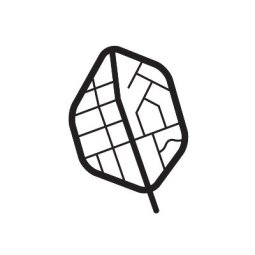Elbow Park group spreading myth that townhomes and row homes are "unsustainable"
An anti-housing NIMBY group led by organizers in Calgary's Elbow Park neighbourhood is attempting to co-opt environmental issues as part of their deep-pocketed campaign against Calgary's Housing Strategy that seeks to lift outdated exclusionary zoning policy currently making row homes and townhouses illegal in established neighbourhoods.
 Website of anti-Housing Strategy special interest group led by Elbow Park organizers invokes "environmental impact" argument against row homes and townhomes.
Website of anti-Housing Strategy special interest group led by Elbow Park organizers invokes "environmental impact" argument against row homes and townhomes.
Group includes former head of "anti-Alberta" public inquiry against environmental groups

Steve Allan, former head of the publicly funded inquiry into "anti-Albertan" campaigns. (Image source: CBC)
Steve Allan, the former head of Jason Kenney's infamous "anti-Alberta" public inquiry and "witch-hunt" against environmental protection non-profit organizations is part of an effort led by the Elbow Park group fighting Calgary's Housing Strategy. The final report of his $3.5-million publicly funded inquiry was denounced for its "climate-change denialism". According to University of Calgary law professor Martin Olszynski, reports commissioned by the public inquiry "dismiss[ed] the reality and seriousness of climate change" and were "replete with generalizations, speculation, conjecture and even conspiracy."
Steve Allan is also known for his public opposition to Calgary's Green Line LRT expansion, which is expected to remove over 25,000 tonnes of greenhouse gases in Phase 1 alone.
Now an apparent born again environmentalist, Allan recently spoke out against Calgary's Housing Strategy arguing that lifting outdated exclusionary zoning policy would threaten "green spaces" in Calgary.
🏡FACT: Parks and green spaces will remain the same, even if they are rezoned
Accord to the City of Calgary, while parks are being proposed for rezoning (i.e. shifting from R-C1 to R-CG), this does not mean they are being proposed for development. They will remain park spaces even if they are rezoned.
🚧FACT: Suburban sprawl is unsustainable
Thanks to decades of unrestrained sprawl, Calgary ranks as the highest road kilometres per capita outside Edmonton. This has translated to the spreading of Calgary's finite tax base over more roads, pipes, streetlights, police and fire departments at an immense cost to Calgary citizens and impact to the services we depend on. Numerous studies show suburban sprawl is economically unsustainable and fraught with hidden costs.

Source: Report - Suburban Sprawl: Exposing Hidden Costs, Identifying Innovations | Smart Prosperity Institute
Without the Housing Strategy, Calgary’s growth will be more reliant on new sprawl that is costly for all Calgary taxpayers who are ultimately forced to subsidize construction and operation of new roads and infrastructure to support more new far flung communities every year.
🦆FACT: Suburban sprawl is leading to the destruction of the remaining natural habitat and wetlands around Calgary
Last year, Calgary City Council gave the green light to new sprawl development of the 570-hectare area south of Seton known as Ricardo Ranch. The area is one of the last remaining natural wetlands around Calgary and features "a diverse ecosystem including rare nesting habitat for birds, suitable conditions for amphibians, sprawling native grassland and an active wildlife corridor."
Destruction of these pristine natural lands around Calgary is all but certain if Calgary clings to its outdated exclusionary zoning bylaws that currently make row homes and townhouses illegal in established neighbourhoods.
 |
 |
Left: NIMBYs oppose loss of "parkland" adjacent Glenmore Landing and roadway to housing development. (Image source: Reddit). Right: Calgary's remaining natural wetland at Ricardo Ranch slated to be paved over for new suburban development (Image source: Nathanial Schmidt).
🚗💨FACT: Adding gentle density to existing neighbourhoods will reduce pollution and GHG emissions
More than a third of Calgary's community-wide GHG emissions are from transportation due in large part to its sprawling suburbs where it ranks as the highest road kilometres per capita in Canada outside Alberta. As the City of Calgary grows in population, adding gentle density in the form of row homes and townhomes in existing neighbourhoods, rather than more new sprawl developments, will help reduce the amount of greenhouse gas emissions and pollution from transportation.

Breakdown of Calgary community-wide GHG emissions. (City of Calgary).
🚨We need your help!

Outdated exclusionary zoning currently makes row homes like these illegal in most Calgary neighbourhoods. (Image source: Twitter)
We need your support again to ensure City Council takes action on implementing the Housing Strategy by removing outdated exclusionary zoning banning row homes and townhouses in established neighbourhoods by lending your voice at the public hearing on April 22nd.
1) 📋 Share the petition of support
Encourage your friends and family to sign the Housing Strategy petition of support.
2) 🥳 Join the list of supporters
Do you know an individual organization that would like to support Project Calgary’s housing advocacy? Have them email us at [email protected].
3) 🗓️ Speak at the public hearing April 22nd
A public hearing on removing outdated exclusionary zoning banning row homes and townhomes will be held on April 22nd, 2024. Join us for a rally for housing at 12PM in the Municipal Plaza in front of City Hall.
